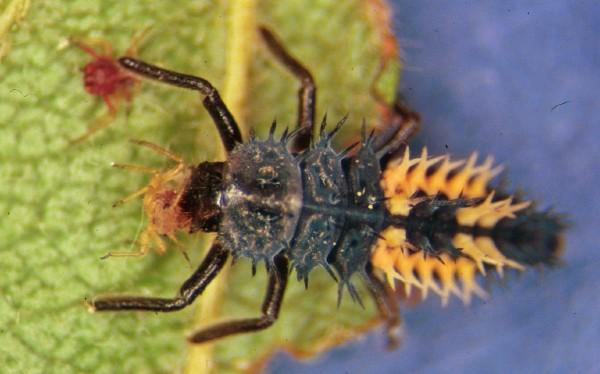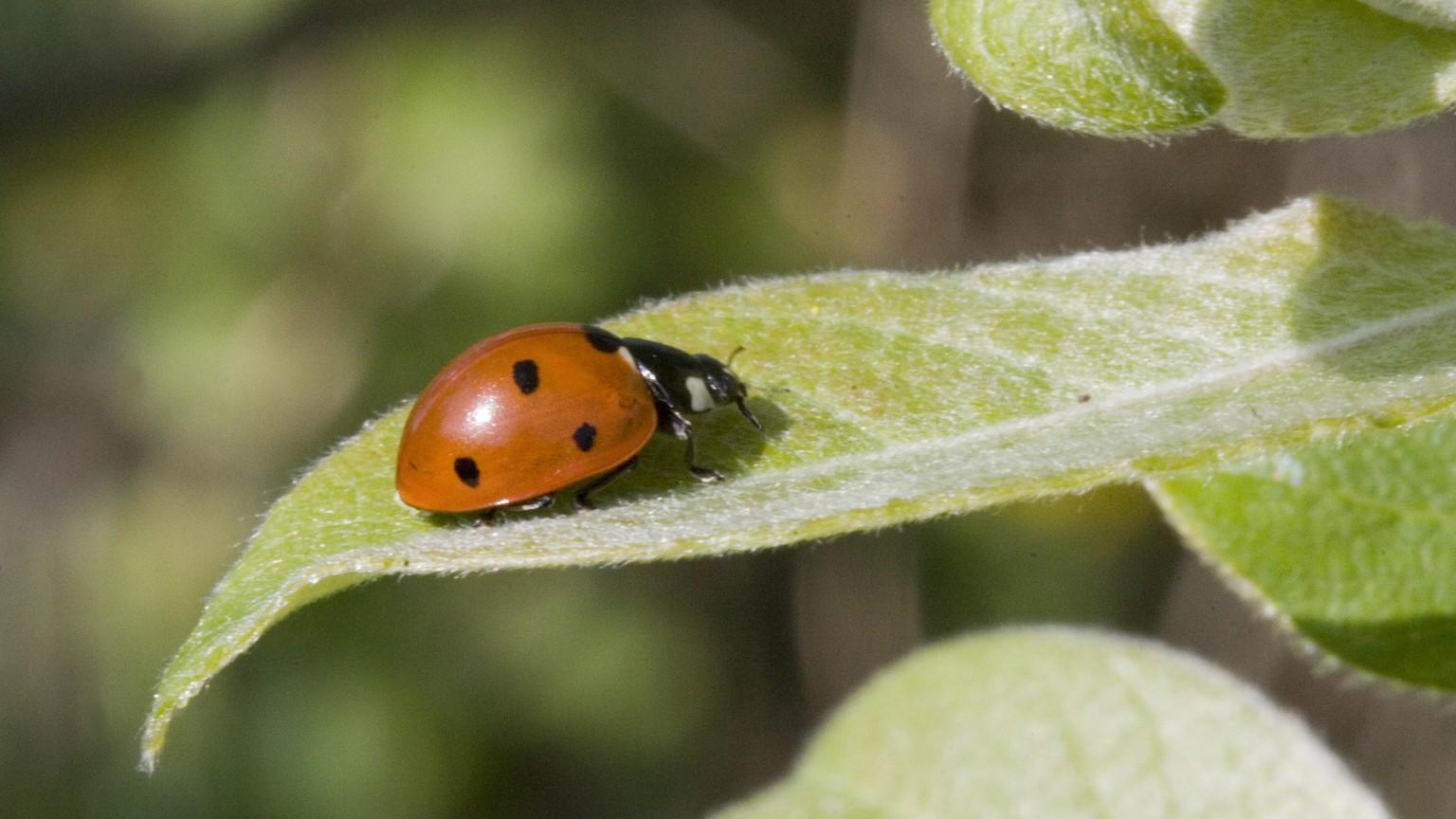About ladybird beetles
- There are many species of ladybird beetles, which are commonly called ladybugs or lady beetles.
- With the exception of two species that can be significant garden pests (Mexican bean beetles and squash beetles), all other ladybugs are the first line of defense for the home gardener against many soft-bodied pest insects.
- There are hundreds of species of lady beetles in North America, most of which survive the winter as adults in sheltered locations.
Important species in Maryland
- Convergent, Seven-spotted, Twice-stabbed, Multicolored Asian

Convergent lady beetle larva. Photo: Joseph Berger, Bugwood.org

Multicolored Asian lady beetle larva eating an aphid. Photo: Whitney Cranshaw, Colorado State University, Bugwood.org
Life Stage(s) that feed on pests
Larvae and adults. Adults will also feed on nectar, pollen, and honeydew.
Insect(s) upon which they prey
Aphids, spider mites, scale insects, whiteflies, leaf beetle larvae, some insect eggs and small caterpillars.
Appearance
Eggs: Tiny, bright yellow-orange, spindle-shaped eggs laid upright in clusters of 5-30, usually located near colonies of insects they eat. May be mistaken for eggs of some pest beetles such as Colorado potato beetle, Mexican bean beetle, and squash beetle.
Larvae: Look completely different from adults, being flattened and tapered, “alligator-like”; up to 1/4" long; usually dark colored with orange or yellow markings; many species have short bristles on some parts of the body; and 3 prominent pairs of legs. Larvae are very active, crawling about quickly as they hunt for prey.
Adults: Vary in size but average 1/4 - 3/8” long; typically round or oval and convex in shape; bright and varied colors ranging from black to pink, yellow, or red; with or without spots on wings. Convergent lady beetle is usually orange with a number of small black spots; twice-stabbed lady beetle is black with two red spots on its back; seven-spotted lady beetle is orange or red with 7 spots on its back, multicolored Asian lady beetles have highly variable spot patterns.
Where to find ladybird beetles
- On many plants throughout the garden and landscape, feeding on soft-bodied insects or flowering plants.
- Look especially on leaf undersides.
- Garden crops on which lady beetles are commonly found include potatoes, sweet corn, peas, beans, cole crops, tomatoes, and asparagus.
How to attract and conserve ladybird beetles
- Grow flowering plants that produce the nectar and pollen eaten by adult lady beetles.
- This is especially important in late spring before the insects they feed on become abundant.
- Avoid or reduce use of broad-spectrum insecticides. Horticultural oils and insecticidal soaps are less harmful to lady beetles than some residual conventional pesticides.
Contributors: Mike Raupp, Jon Traunfeld, and Chris Sargent
